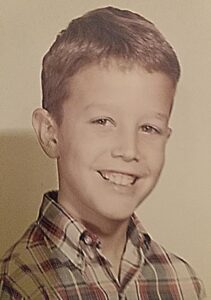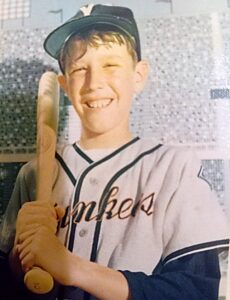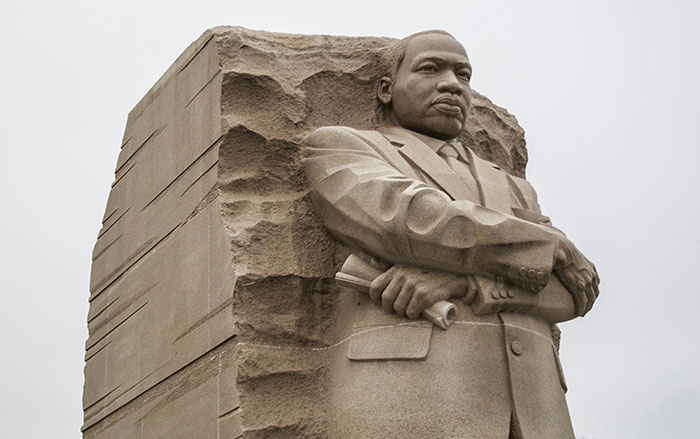‘Countdown: A Life in 20 Songs’ author explores history through pop music

Tom Waldman, author of the new book “Countdown: A Life in 20 Songs.” Photo/by Lew Groner
by Mick Rhodes | editor@claremont-courier.com
What is it about music, particularly the songs we heard when we were young, that gives it the power to remind us so vividly of time, place, emotion?
Tom Waldman, playwright, television host, and author, taps into this question in his highly entertaining new personal, historical, and political musical memoir, “Countdown: A Life in 20 Songs.”
Waldman, the author of five books, grew up in Claremont and is a 1974 CHS and 1978 Pitzer College grad.

Tom Waldman, author of the new book “Countdown: A Life in 20 Songs,” is pictured here when he was a student at Sycamore Elementary School in Claremont. Photo/courtesy of Tom Waldman
He set out to write about history.
“It wasn’t necessarily overt, but in my own mind as I was thinking about periods in my life and history and politics, somehow these songs kept breaking into the scene,” Waldman said.
The book is broken into 24 chapters, each using a song — from artists as diverse as The Beatles, Beethoven, T. Rex, and The Dickies— as its jumping off point. As Waldman got into the writing, he surprised himself in that some of the songs that worked weren’t necessarily among his favorites, “but they kept making themselves known in the narrative,” sometimes central, other times somewhere on the edges.
“But either way the music gave me a way to tell the story that worked for me, and it didn’t feel awkward; it felt very natural.”
For example, his gateway into the great early rock ‘n’ roll of the mid- to late-1950s actually occurred much later, in 1974, when he was 18. A contractor who was doing repair work at the Waldman’s Claremont home was listening to a radio station — K-Earth 101 FM — that was playing the music of the founders of rock ‘n’ roll, among others.
“And I remember hearing [Sheb Wooley’s May 1958 #1] ‘Purple People Eater’ and thinking that’s so silly, but all these other songs were coming up, Chuck Berry and Little Richard, that I really wasn’t familiar with … and I thought, God, I really like this stuff. This is crazy!”
“Purple People Eater” became the impetus for chapter 2 of “Countdown: A Life in 20 Songs.”

Tom Waldman (with guitar), author of the new book “Countdown: A Life in 20 Songs,” is pictured here in Berkeley in 1968 with his father and brother. Photo/courtesy of Tom Waldman
“I had this very arrogant ‘60s attitude toward the ‘50s like they were all backwards, silly, and repressive,” Waldman said. “The music gave me a different way to look at that decade and to consider American history in the postwar period.”
Though he was too young to be drafted, the iconic, authoritative 1970 version of Norman Whitfield and Barrett Strong’s, “War,” by Edward Starr (chapter 14), was very much linked to his thinking about the Vietnam War.
“Growing up in Claremont in the ‘60s in an academic family and then moving to Berkeley at the end of the ‘60s, Vietnam was very much a presence in my life.”
On its face, one might consider “Countdown: A Life in 20 Songs” an exercise boomer wistfulness. You would be mistaken.
“I don’t consider it nostalgia,” Waldman said. “The way we think about nostalgia and music is, ‘Oh, I remember the person I was dating at the time,’ or, ‘I remember driving to the beach and hearing this song.’ We all have that to some extent and that’s kind of fun, and I think the record industry plays on that nostalgia when it sells oldies collections. But it was more ingrained in a way that wasn’t so obvious that created those connections for me.”
He came to appreciate the Rolling Stones as a teen in the 1970s, but it was the music the British band made in the 1960s, particularly the 1965 single “Get Off Of My Cloud” that pulled him in.
“I put needle to vinyl, heard a few bumps and pops, and then the opening,” he writes in chapter 10. “Charlie Watts, the Stones’ drummer, did the honors: Two thunderous “booms” on the tom-tom followed by the shooting sparks of a snare drum roll. Mick Jagger let out an appreciative “yeah,” and away they went. A few minutes earlier, I was a lonely boy slouched on a chair, desperately in search of diversions. Now I was accompanying the one and only Rolling Stones on air drums and air guitar. When ‘Get Off Of My Cloud ended, I raised the needle, and returned it to the beginning of the album. I continued this routine for another 15 minutes.”
“I put it on and it just … damn! I was 17 at the time and suddenly I was ready for the Stones. And that has continued for 50 years,” Waldman said.
Born in Iowa in 1956, Waldman lived in Arizona before his family moved to Claremont when he was 7. His father was a philosophy professor at Harvey Mudd College from 1963 to his retirement in 1991. The family lived for a time across from Sycamore Elementary School on Eighth Street, then later at 12th Street and College Avenue. He recalled the abundant open space at the Claremont Colleges in the 1960s and playing baseball on the fields, only to be chased away by landscapers.

Waldman in his Claremont Pony League Yankees uniform in 1970. Photo/courtesy of Tom Waldman
“What was great too about Claremont is you get on your bike and you go a few blocks and you’re in this downtown area,” Waldman said. “Claremont had a couple record stores at the time — this was pre-Rhino — where I bought stuff in the ‘60s and ‘70s.”
At 66, Waldman admits he’s not quite the musical omnivore he once was, but counts relative modern artists such as Oasis and The Black Keys as among his faves from recent decades.
“The whole way that kids get music today is kind of fascinating to me,” he said. It used to be “I’ve got KHJ or KRLA on, and I’m hearing a new single that I really like, and I’m going to go buy it. And it was very simple in that way. Or in the case of The Monkees, television, or in the case of T. Rex, television. And that was it. And that worked.”
Waldman, who lives in Downtown LA, is well into writing his next book. It’s about a fictional all-female L.A. rock band — a Black girl, a Latina, and two white girls — working during the tumultuous period of 1964 to 1966, each telling their story through their own wildly varying cultural/social lens.
“Taking this idea that, why couldn’t there have been an all-female rock band in the ‘60s the way The Bangles and The Go-Go’s were in the ‘80s?”
“Countdown: A Life in 20 Songs” is available on Amazon.








0 Comments